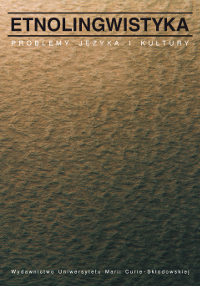Semantyka okna w tradycyjnej kulturze Słowian Wschodnich
THE SEMANTICS OF THE WINDOW IN THE TRADITIONAL CULTURE OF EASTERN SLAVS
Author(s): Jelena LewkijewskajaContributor(s): Irina Lappo (Translator)
Subject(s): Anthropology, Language studies, Language and Literature Studies, Applied Linguistics
Published by: Wydawnictwo Naukowe Uniwersytetu Marii Curie-Sklodowskiej
Keywords: 'THE OTHER' WORLD; MYTHOLOGICAL FIGURES; MYTHOPOETIC TRADITION
Summary/Abstract: The window in Slavonic folk tradition functions as a ritualistic entrance and exit, connecting this world and 'the other' world. Its role as a mediator between the two worlds is revealed in funerals and legends concerned with death: it is a way in which the souls of the deceased and mythological figures enter and leave the house. In ceremonies focused on death it is a dwelling place of the spirits of the deceased, of figures from the afterworld and angels. Social and ceremonial 'aliens' - beggars and Christmas-carol singers - also stand by the window. Ritualistic encounters through the window function in folk tradition as one of the channels of communication with the afterworld. To throw something out of the window means to dispose of a dangerous or 'impure' object in a ritualistic manner. What was 'alien' was also brought to the house through the window, so that it could become familiar. The window is also associated with the reproductive system (cf. the custom of opening the windows and other openings in the house to alleviate the pains of delivery). Looking through the window is a form of contact with 'another' world, a means of seeing the invisible, e.g. one's own fate. In the mythopoetic tradition a house without windows is seen as a deviation from the norm, a dwelling place of someone alien, of a being from a different world.
Journal: Etnolingwistyka. Problemy Języka I Kultury
- Issue Year: 16/2004
- Issue No: 16
- Page Range: 173-177
- Page Count: 5
- Language: Polish

